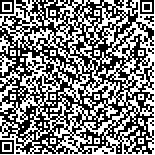洪永锋,徐军,沈显山,冀磊磊,阚秀丽,李雪明,吴建贤.不同时机开始康复干预对2岁前脑瘫高危儿粗大运动疗效的影响[J].中华物理医学与康复杂志,2017,39(9):686-691
扫码阅读全文

|
| 不同时机开始康复干预对2岁前脑瘫高危儿粗大运动疗效的影响 |
| Effects of early rehabilitation on the gross motor function of infants at high risk of infantile cerebral palsy |
| |
| DOI: |
| 中文关键词: 脑性瘫痪 高危儿 康复时间 运动发育迟缓 |
| 英文关键词: Cerebral palsy High risk infants Rehabilitation planning Motor retardation |
| 基金项目:安徽省全科医学临床科研项目(2016QK018) |
|
| 摘要点击次数: 5468 |
| 全文下载次数: 5987 |
| 中文摘要: |
| 目的 探讨不同时机开始康复干预对2岁前脑瘫高危儿粗大运动疗效的影响。 方法 将我院出生后14d、有脑瘫高危因素、新生儿行为神经测定(NBNA)评分<35分的新生儿(225例)作为脑瘫高危儿纳入研究对象,剔除失访、死亡及被诊断为其它疾病患儿11例,最后完成本研究214例,其中男117例,女97例。根据患儿开始接受正规康复干预时的月龄分为Ⅰ组(42例)、Ⅱ组(47例)、Ⅲ组(37例)和Ⅳ组(25例),分别于出生后月龄≤3个月、3~6个月、6~12个月、12~24个月开始接受正规康复干预(包括住院康复干预和家庭康复干预),以住院康复干预(2~3周)-家庭康复干预(4~6周)-住院康复干预(2~3周)的模式进行,在患儿整体发育接近或达到正常发育水平时,则停止住院康复干预改为单一的家庭康复干预;将未接受正规康复干预仅接受家庭康复干预的63例脑瘫高危儿作为家庭康复干预组(Ⅴ组)。住院康复干预措施主要是根据患儿症状及体征合理应用营养神经药物、物理因子疗法、手法治疗、运动疗法、认知训练、引导式教育、支具及矫形器;家庭康复干预措施主要是由康复医师和康复治疗师共同制订详细、规范、个体化的运动方案,教会家长正确执行运动处方及简单的手法治疗,并要求家长在家庭完成康复干预,每日1~2次按运动处方做运动同时进行手法治疗,每次35~45min,每1~2个月到门诊定期复诊。分别于脑瘫高危儿出生后3、6、12、24个月时,采用粗大运动功能测试量表(GMFM)检测患儿的粗大运动发育能力,并记录各时间点GMFM评分;统计各组住院总时间以及临床诊断为脑瘫和运动发育迟缓的例数;统计各组脑瘫高危儿2岁时的预后(优、良、一般、差)例数,计算各组预后优良率。 结果 ①月龄3个月时,Ⅰ组至Ⅴ组的GMFM评分依次明显增高,分别为(5.00±1.89)、(6.80±1.55)、(8.44±1.26)、(11.10±1.72)和(12.70±1.64)分,各组间两两比较,差异均有统计学意义(P<0.05);月龄6个月时,Ⅰ组、Ⅱ组、Ⅲ组的GMFM评分分别为(39.10±7.95)、(40.60±3.68)和(43.40±3.84)分,组间两两比较,差异均无统计学意义(P>0.05),且显著低于Ⅳ组[(49.90±3.32)分]和Ⅴ组[(52.40±1.48)分],组间差异均有统计学意义(P<0.01);月龄12个月时,Ⅰ组至Ⅴ组的GMFM评分分别为(177.20±16.92)、(172.10±13.81)、(157.50±18.93)、(163.00±9.04)和(178.50±4.72)分,其中Ⅰ组与Ⅱ组、Ⅰ组与Ⅴ组比较,组间差异均无统计学意义(P>0.05),而Ⅰ组、Ⅱ组、Ⅴ组均显著高于Ⅲ组和Ⅳ组(P<0.05);月龄24个月时,Ⅰ组至Ⅴ组的GMFM评分依次逐渐降低,分别为(218.64±16.07)、(211.10±13.14)、(201.80±11.54)、(193.20±12.33)和(185.40±10.74)分,组间差异均有统计学意义(P<0.05)。②Ⅲ组住院总时间最长,其次为Ⅰ组和Ⅱ组,Ⅳ组住院总时间最短,Ⅴ组未住院;Ⅰ组住院总时间与Ⅱ组比较,差异无统计学意义(P>0.05),其余组间两两比较,差异均有统计学意义(P<0.05)。③Ⅰ组和Ⅱ组的脑瘫发生率(38.10%和29.79%)明显高于Ⅲ组(21.62%)、Ⅳ组(12.00%)和Ⅴ组(3.17%),且组间差异均有统计学意义(P<0.05);Ⅰ组和Ⅱ组的运动发育迟缓发生率(7.14%和10.64%)显著低于Ⅲ组(56.76%)、Ⅳ组(68.00%)和Ⅴ组(36.51%),除Ⅰ组与Ⅱ组、Ⅲ组与Ⅳ组间差异无统计学意义(P>0.05)外,其余组间差异均有统计学意义(P<0.01)。④Ⅰ组至Ⅴ组在脑瘫高危儿2岁时的预后优良率依次显著下降(Ⅰ组88.10%、Ⅱ组78.72%、Ⅲ组62.16%、Ⅳ组48.00%、Ⅴ组31.75%),组间两两比较,差异均有统计学意义(P<0.01)。 结论 脑瘫高危儿及早进行正规康复干预尤其重要,在出生后3个月内开始正规康复干预的治疗效果最佳;出生后3~6个月开始正规康复干预的治疗效果次之,但仍较理想;而在出生后6~12个月和出生后12~24个月才开始正规康复干预的治疗效果依次显著递减。 |
| 英文摘要: |
| Objective To explore the effects of rehabilitation starting at different stages on the gross motor function of infants with high risk of cerebral palsy. Methods 214 neonates (117 boys and 97 girls) at least 14 days old and with a neonatal behavioral neurological assessment scale (NBNA) score of less than 35 were randomly divided into four groups. They received 2 to 3 weeks of rehabilitation in the hospital, followed by 4 to 6 weeks of family rehabilitation and then another 2 to 3 weeks of hospital rehabilitation. The three groups started this course of treatment at different times: beginning when the babies were not older than 3 months for group I, 3 to 6 months for group II, 6 to 12 months for group III and 12 to 24 months for group IV. In each individual case the rehabilitation in hospital was replaced by family rehabilitation only when the baby′s overall development was normal or almost normal. Another 63 infants with high risk of cerebral palsy composed group V. They received only the family rehabilitation. The rehabilitation in hospital included taking neurotrophic drugs, receiving physical treatment, hand manipulation, kinesiotherapy, cognitive training, conductive education, and using orthoses. Family rehabilitation was implemented by the parents once or twice a day, for 35 to 45 minutes each time following detailed, individualized exercise plans made up jointly by the rehabilitation doctors and therapists. Moreover, a clinical checkup was required every 1 to 2 months. At 3, 6, 12 and 24 months old, all of the subjects′ gross motor ability was quantified using the gross motor function measure (GMFM) scale. The hospital stays and the number of subjects diagnosed with cerebral palsy and motor retardation were recorded. Results At 3 months old, the average GMFM scores of the groups were 5.00±1.89 for group I, 6.80±1.55 for group II, 8.44±1.26 for group III, 11.10±1.72 for group IV and 12.70±1.64 for group V, the controls. All of the inter-group differences were significant. At 6 months old the average GMFM scores of groups I to IV were not significantly different, but all were significantly lower than the group IV average. At 12 months old the average GMFM scores of groups I, II and V were significantly higher than the group III and IV averages. At 24 months old the groups′ average scores decreased consistently from I to V, with significant differences between one group and the next. Group III had the longest hospital stays, followed by groups I, II and IV. Those inter-group differences were significant except for between groups I and II. The incidence of cerebral palsy in groups I and II (38.10% and 29.79%) was significantly higher than in group III (21.62%), IV (12.00%) or V (3.17%). Moreover, the incidence of motor retardation in groups I and II (7.14% and 10.64%) was also significantly lower than in group III (56.76%), IV (68.00%) or V (36.51%), but the differences between groups I and II and between groups III and IV were not significant. The incidence of excellent gross motor performance ratings at 24mo decreased significantly from group I to group V, with all of the inter-group differences significant. Conclusion Early and formal rehabilitation is of great importance for infants with a high risk of cerebral palsy. The earlier formal rehabilitation starts, the better is its effect. |
|
查看全文
查看/发表评论 下载PDF阅读器 |
| 关闭 |
|
|
|